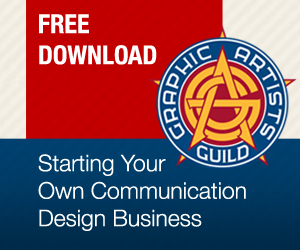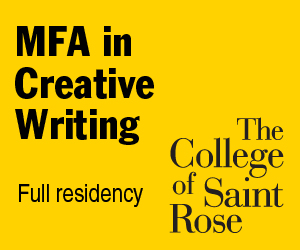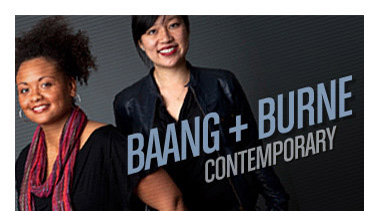Baang and Burne: What if there were no more art galleries?
VIEW THE BAANG AND BURNE GALLERY
By Indigo, Fine Arts Contributing Editor
Baang and Burne Contemporary is a non-traditional art space located in New York City. They don’t have contracts with their artists. They don’t act as a middleman between artists and buyer. They don’t have a permanent space. The artists themselves determine the revenue share on sold pieces. They don’t “represent” the artists. What they do is have shows, have art dinners, and educate artists in ways to market themselves. And art gets sold.
We attended an opening for former stated feature artist Readymade777 and were intrigued by the Baang and Burne model. We approached co-founders Charlie Grosso and Kesha Bruce and they agreed to chat with us about how this atypical gallery model works.
stated: Can you tell us about Baang and Burne, your motivation for starting it, and where you hope to take it?
Kesha Bruce: Quite simply, Baang and Burne started as a way for us to collaborate and show work by artists that we were interested in. We are both friends with a diverse group of international artists who were looking for new, innovative ways to promote and sell their work. We also wanted to create something that functioned outside of the traditional gallery model. We basically took those ideas and built Baang and Burne around that need
Charlie Grosso: Baang and Burne started with a desire to find a new way to do business. We didn’t like the existing model and we wanted to build something that offered transparency and collaboration. Even though Baang and Burne is not a co-op gallery, we constantly talk to our artists and work closely with them to drive their careers onward. We build the gallery without walls because we want flexibility and innovation to be the foremost important aspect of the business. The goal is to constantly improve upon what we’ve learned and keep on being out there in the leading edge of what an art gallery could be.
stated: How is your approach to representing artists different than the traditional gallery and where do you see Baang and Burne in the relationship between artist and buyer?
Kesha Bruce: I see Baang and Burne as a springboard for artists. It is a way to introduce their work to a new and bigger audience, but the difference is that we don’t position ourselves as middlemen between artists and art buyers. We actually facilitate the process of bringing these two groups of people together. Our artists don’t have exclusive contracts with us and we don’t represent them in the traditional sense. We strongly encourage them to take control of their careers and their own marketing. We just help them with that process.
Charlie Grosso: We offer our artists the ability to name their own percentage with us instead of dictating it to them as all galleries do. We see ourselves as facilitators first and a representative second. We make the connections and if our artists feels it would be best for us to continue the conversation for them on their behalf then we do so gladly.
stated: You’ve just finished a massive undertaking in the production of 6x6, a project that saw 6 exhibitions take place over the course of 6 weeks this fall. Can you speak a bit about your experiences with this project, what you’re taking away from it, and any upcoming plans for future events?
Kesha Bruce: 6x6 was by far the most demanding project I’ve worked on in my career. The exhibitions were great, but for me the best part was the opportunities we had to actually talk to artists. I learned really quickly that so many artists feel a real sense of overwhelm and helplessness when it comes to the business aspects of actually having an art career.
Future events are not yet set in stone, but there will be a component aimed at helping artists better understand the basics—constructing and growing their art business.
 |
 |
 (6x6) (6x6) |
 |
Charlie Grosso: The one thing that really stayed with me during the 6 weeks is how people would remark upon how “nice and friendly” we are. At one 6x6 opening a woman told me that we are the nicest gallery around. I was surprised. Has the art world crawled so far up its own hype that it has forgotten that the core value of the business is about service?
We did something really big and extraordinary with 6x6 and I am really pleased with all the partnerships that came together for it. In addition to the 6 shows, we hosted another 10 events on top of it during the 6 weeks and I am excited by the programming we’ve put together. It was a huge learning curve on what worked, which crowd responded well to what events, and now we are going to take all that we’ve learned and incorporate it into what we are working on now. Stay tuned; it will be exciting!
stated: Charlie, you worked in commercial photography for many years prior to turning your focus to documentary photography and finally directing a gallery. Can you speak a bit about this journey, and how your life has changed along the way?
Charlie Grosso: Oh my! That would be a long story. There is a saying, “Humans Plan, God Laughs.” The road I’ve traveled is not one I would have planned for myself but none of it has been a surprise either. I’ve been a commercial photographer for 10 years and still am one, but the focus of my work has radically shifted. I think as you evolve, your passion changes. As your passion changes, your work evolves with it. The goals I had for myself 10 years ago when I first started out in the business are irrelevant to what I want now. I like to constantly check in with myself and see what is the thing that matters most to me and what is the “thing” that is fueling the fire within, and I follow that. A life in the arts is what I am certain my life will be dedicated to but I am never opposed to trying on different hats and learning something new as everything feeds back into everything else. I smile at every challenge and opportunity and say YES!
stated: Kesha, your work delves heavily into narrative, including your own stories as well as those of friends, family, and strangers. Can you talk us through your process of gathering these stories and the objects that represent them and how those collected memories are transformed into the finished work?
Kesha Bruce: It’s easy for me to talk about the technical aspects of my process, such as doing multiple drawings of a subject, writing corresponding texts, or recreating and retelling stories from my past, but the rest is nearly impossible to explain. Everything starts with a simple or really basic idea, but once I start working, making drawings, the idea has its own momentum. Half the time I’m working, I’m not really even sure what it is I’m making. Sometimes it doesn’t even make sense to me until it’s actually finished. Why does one idea end up a drawing and another a collage or a painting? Ten years into being a full-time working artist I still have no idea. How exactly the ideas come together and become objects is just as magical of a process to me as it is to the viewer.
 |
 |
 (Kesha’s work) (Kesha’s work) |
 |
stated: Part of your business is running creative consultations on marketing strategy for artists. This seems to be a pretty progressive statement in an industry in which many galleries prefer to maintain control over the business of marketing artists and selling their work. Can you discuss what drew you to move in this direction?
Kesha Bruce: We started the consulting because we saw an enormous need and we knew we could fill it. As soon as we started Baang and Burne, we began to get approached by artists for help. Most of them wanted to know how they could be represented by us. But in reality there was no way we could take on more artists than we already had. We started offering consulting as a way for artists to understand that they didn’t necessarily need us to represent them—they could represent themselves. Every artist works at their own pace and works on their marketing efforts in their own way. It really is an on-going and ever changing process.
Charlie Grosso: I believe in teaching, sharing, and helping. All of the knowledge we have in terms of marketing and promotion should be shared. Knowledge is dead if we keep it to ourselves. If we can help artists be better at the promotional side of their job, it in turn makes our jobs easier as well. The consulting is also a way to be able to help artists who might not be a good fit for the gallery. Just because we can’t represent you, doesn’t mean that we can’t offer you assistance.
stated: Balancing careers as artists and gallery directors is surely a challenge. Do you have any advice for emerging creatives that may be considering a similar path?
Kesha Bruce: I’m not a big believer in balance. I am however a huge believer in focus and organization. I pick one project and then throw all the ideas and energy I have into that one thing until it’s done. Then I’m ready to move onto the next thing. Being a gallery director as well as having a full-time studio practice is a huge effort. Anyone who decides to give it a try should understand the high degree of discipline and sacrifice it demands. Say goodbye to your social life and get used to working 16-hour days six days a week! For sure it’s not for everyone, but in the end it’s immensely rewarding.
(Charlie’s photos from Wok the Dog)
Charlie Grosso: The easy answer to the question is that I work and there is nothing that I do that is not work. I am an all-or-nothing kind of person. Once I am involved in a project, I dedicate myself to that without reservation. I live, breath, sleep, and eat that particular obsession. This is the life of a freelancer, of an entrepreneur. If you don’t love what you do enough to want to do it all the time then it is not for you. I treat every project—be it the next show for the gallery, my long-term documentary [Wok the Dog], or the book I’m writing—with equal amount of enthusiasm and focus. I shift back and forth between each of the projects as everything is on a different time. Remembering that everything has its own timing might be the hardest thing. As much as you like to drive with your foot on the accelerator all the time, what might not be what is best for the project. So then you let it up, shift to the other projects, and come back to it in due time. This is not so much about balance as surfing the waves. Love what you do and learn as much as you can is the only real advice I have.
VIEW THE BAANG AND BURNE GALLERY
—-
Visit Kesha and Charlie at:
Baang and Burne Contemporary
KeshaBruce.com
CharlieGrosso.com















 Indigo
Indigo
Reader Comments